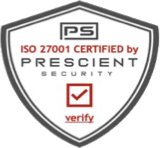Subsidiaries are types of organizations that fall under the umbrella of another larger business entity, which is known as the parent company. Subsidiaries enable large organizations to expand their reach and influence into markets beyond the reach of their main corporate entity.
However, there are different types of subsidiary structures, primarily defined by the parent company’s ownership of the subsidiary business. Let’s break down those differences and the best practices to implement effective subsidiary management policies for various types of subsidiary-owned business structures.
What is a subsidiary company?
A subsidiary company is a business whose parent company owns more than half of the subsidiary voting shares. The parent company’s controlling interest can be as little as 50%, plus one, of the issued shares. Despite the controlling interest, the subsidiary is classified as a separate legal entity to the parent company. This distinction is important for liability, tax, and regulatory purposes.
While the parent company does have a controlling interest in the subsidiary’s issued shares, the degree of control over the subsidiary’s day to day operations varies by organization. Some parent companies choose to exercise significant control over the subsidiary, while others maintain a hands-off approach to overseeing subsidiary activities.
What is a wholly owned subsidiary company?
A wholly owned subsidiary company is, as the name implies, a business whose common shares are solely controlled by the parent company. There are no minority shareholders in a wholly owned subsidiary, and these organizations remain privately vested interests rather than publicly traded companies on stock exchanges.
Since the parent company has 100% ownership over the subsidiary, the degree of control and influence over a wholly owned subsidiary’s day to day operations is far more significant than subsidiaries where parent entities maintain a less controlling interest. However, under the law, the subsidiary is still classified as a separate legal entity with its own organizational structure that’s independent of the parent company.
Advantages of subsidiaries and wholly owned subsidiaries
Among the main reasons large organizations establish subsidiaries are for tax purposes and the ability to enter new markets. One is about reducing costs, while the other empowers businesses to expand revenue with fresh customers. In either case, the fundamental purpose is to look out for the best interests of the parent company.
Tax benefits from subsidiary profits/losses
There are tax benefits to holding subsidiary companies under your parent company’s corporate umbrella, particularly wholly owned subsidiaries. Any losses incurred by the subsidiary can be used against the profits generated by your parent firm. This helps reduce your annual tax liability and helps your business entity retain more profit.
If your entity takes full ownership of a wholly owned subsidiary through an acquisition, it can also help improve your corporate finances. The acquisition qualifies as a stock purchase that your tax and finance departments can record for tax purposes at the end of the fiscal year.
Automatic brand recognition in new markets
Sometimes, parent entities create subsidiaries to diversify their business holdings and create new brands that, on the surface, appear to be independent from the parent company. In other cases, large organizations will merge with or acquire other independent entities and fold them into their organizational structure as subsidiaries of their parent brand.
The advantage of the acquisition approach is that the subsidiary brand already has recognition and awareness in certain markets. There’s also a loyal customer base that creates effective word of mouth marketing to support greater expansion.
If your intent, as the parent company, is to acquire more market share in this new region, you don’t have to spend the time and money to build your brand identity in that market. The subsidiary already has that name recognition. Instead, you can reallocate the money you would spend on promotions of your parent entity to support further revenue expansion of the subsidiary. Over time, you can create a more established strategic relationship between the parent entity and the subsidiary, enabling scalable revenue growth for both businesses.
Greater synergy and increased efficiencies
Aligning the parent company and the subsidiary around processes and workflows regarding things like information technology, finance, taxation, reporting structures, etc. can streamline operational workflows between the two organizations. Efficient workflows reduce costs incurred by the business, which helps make your entity more profitable.
Use subsidiary management software for reporting and organizational structure
Whether it’s a subsidiary with majority ownership or a wholly owned subsidiary, every business requires detailed minute book records. Those records structure parent companies and their subsidiaries, aligning all branches of the corporation around concrete data that protects the interests of the institution.
Effective organizations, at the parent entity or subsidiary level, promote good governance, improve risk management, and compliance with regulatory laws. Governance, Risk Management, and Compliance (GRC) policies form the backbone of any organization’s entity management procedures.
An intuitive subsidiary management system helps subsidiaries and wholly owned subsidiaries streamline their GRC policies. The benefit of tracking all governance and compliance policies and procedures on one centralized platform is that strategic decisions that impact the parent and subsidiary companies can be made in an efficient manner. All leaders can view the records on the platform as a single source of truth to help shape the future direction of the organization.
The platform has built-in templates for organizational charts, cap tables, and compliance modules to insert structured governance and reporting modules into key business decisions. If anyone has questions, the records show exactly who to contact for the answers. This is helpful for internal discussions, as well as with external auditors or regulators with questions about the parent company’s or subsidiary’s efforts to remain in compliance.


